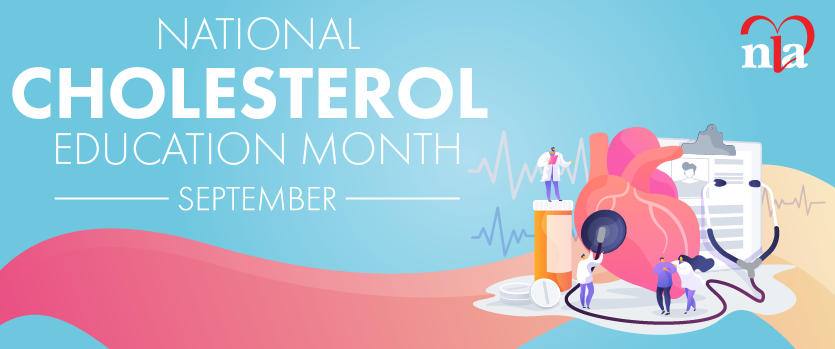R.E. is a 58-year-old Asian male who finally quit smoking one month ago, and is now being treated for hypertension to goal with the combination amlodipine/benazepril. He has type 2 diabetes and takes metformin 500 mg bid. His initial lipid panel revealed a TC=230 mg/dL, LDL=140 mg/dL, HDL=35 mg/dL and TG=265mg/dL and his Non HDL- was 195. His BMI was 29, FBS=109mg/dL and his HbA1C=6.8. In general he has led a sedentary lifestyle. He was placed on Simvastatin, 40 mg q HS and three months later his lipid profile was: TC=145mg/dL, LDL=89mg/dL. HDL= 31mg/dL, and TG=166mg/dL, and non- HDL-C=114.
Because he has multiple risk factors including diabetes, using ATP III guidelines he has an LDL goal of <100mg/dL and a non-HDL-C goal of <130.
Additional data from an NMR lab obtained on the same blood sample: ApoB=97mg/dL, (optimal <60)*LDL-P=1531 nmol/L, (high risk >1000)* sdLDL 32 mg/dL, (optimal <21)* ApoA1=111 mg/dL (optimal >150)*, ApoB/ApoA1 Ratio=0.87 (high risk >0.81)*. He is relatively sedentary and followed no particular diet consistently. Is this additional information useful in clinical practice?
LDL-C concentration, commonly calculated, is simply the amount of cholesterol in the LDL fraction of plasma, and has become the major target for preventing vascular disease associated with dyslipidemia. ApoB is a measure of the total number of atherogenic particles and in some studies it is a more precise marker for risk of vascular disease. The cholesterol content of the LDL particle can be quite variable. In patients with type 2 diabetes and obesity associated with high triglyceides, this discrepancy seems to amplify. Cholesterol ester transfer protein, (CETP) transfers triglycerides from triglyceride-rich VLDL to cholesterol containing LDL and HDL lipoproteins in exchange for cholesterol. LDL-C may be deceptively lower as the cholesterol content is decreased but the particle number has not changed. When triglyceride-rich LDL particles are then exposed to hepatic lipase, triglycerides are cleaved from the LDL particle creating small dense LDL. Small LDL particles may be more subject to oxidation and entry into blood vessel walls potentially accelerating the atherosclerotic process.
Are apolipoproteins better CVD risk predictors than lipids? The INTERHEART study suggested that the ApoB/ApoA1 ratio was more strongly associated with risk for acute myocardial infarction in all ethnic groups, in both sexes, and at all ages. Additionally, ApoB, and the ApoB/ApoA1 ratio were strongly associated with more fatal myocardial infarction in men and women. ApoA1 was noted to be protective in the AMORIS trial.Analysis from this trial suggested that these values should also be measured to evaluate cardiac risk. Some data, but not all, suggests that this ratio is superior to non-HDL-C calculation {Total Chol – HDL-C= non-HDL-C}. The area remains controversial because the collaborative meta-analysis utilizing individual patient data could not find that ApoB was superior to predicting MI. Although non HDL-C and ApoB are highly correlated in large groups, they may be only moderately concordant for some individuals.
In another study looking at the association between ApoB, ApoA1, the ApoB/ApoA1 ratio, and ApoA1 in the prediction of myocardial infarction in middle-aged men and women, only ApoB and the ApoB/ApoA1 ratio were strong predictors of coronary events. ApoA1 did not add significantly to the estimation of coronary risk.
Patients taking statins need to intensify CVD risk reduction lifestyle measures through proper diet, exercise, and avoidance of tobacco. In a study published by Kokkinos et al., statin treatment and increased fitness were independently associated with lower mortality among dyslipidemic patients. The combination of statins and increased fitness resulted in lowest quartile of mortality risk than either alone.
In our case, we felt there was justification for intensifying drug therapy and lifestyle intervention measures. The initial lipid panel results in contrast would not have lead us to demand a more vigorous approach for him.

Our primary goal was to further reduce LDL particle number and ApoB levels and improve his ApoB/ApoA1 ratio. Rather than increase simvastatin to 80mg (not recommended by the FDA), we chose to change the statin to rosuvastatin 20 mg, and intensify lifestyle changes. We expect that with cigarette cessation, our patient’s HDL will increase as valuable enzymes in the HDL molecule may have been inhibited by smoking. Regarding lifestyle, we asked him to incorporate exercise into his busy work schedule by purchasing an inexpensive pedometer and use parking spaces further away, and stairs whenever possible. We asked him to find time during his lunch break to walk for at least 15 min, and when possible to devote this amount of time either before or after work. On weekends he was able to walk for an hour each day with his wife. He was instructed to avoid "anything white" in his diet such as breads, rice, and potatoes, as well as sweets. At our request, he purchased a recommended book to learn more about low glycemic index foods. Four months later, he lost ten pounds and repeat labs demonstrated that his FBS was 94mg/dL, HbA1C=6.1, Total Chol=137mg/dL, LDL-C=75mg/dL, TG=120mg/dL, HDL-C=38mg/dL, non- HDL-C=99. Pt’s BMI dropped to 27 and his lipoprotein data now revealed an ApoB=80, LDL-P=950nmol/L, ApoB/ApoA1=0.70.
In today's world of medicine, properly assessing patients and treating to achieve optimal risk reduction is a moving target. Which risk-assessment formulae do we use? Is 10-year or lifetime risk assessment best? Patient adherence and compliance are made more difficult by the endless plethora of readily available information and misinformation to which our patients are exposed on the internet and elsewhere.
As clinicians, we read studies that tell us that we are "under-treating" and we are "soft" on lifestyle changes. We encounter barriers to aggressive and multi-drug combinations due to patient reluctance to take "more meds," the high cost of pharmaceuticals, and formulary roadblocks. Despite this, discovery and innovation continue.
What are "normal" lipids? What will be the "new normal?" What will not change, however, is that as clinicians, we will always be required to use our sound judgment in interpreting and applying the best available evidence with honesty and compassion for our patients.
Disclosure statement: Ms. Given has no disclosures to report. Dr. Greenfield has received honoraria from Abbott Laboratories and Merck & Co.





.jpg)
.png)












